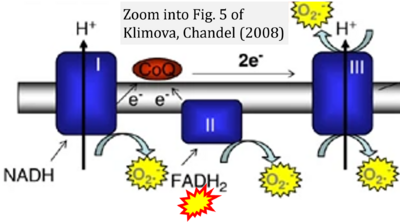Klimova 2008 Cell Death Differ
| Klimova T, Chandel NS (2008) Mitochondrial Complex III regulates hypoxic activation of HIF. Cell Death Differ 15:660-6. doi: 10.1038/sj.cdd.4402307 |
Klimova T, Chandel NS (2008) Cell Death Differ
Abstract: Decreases in oxygen levels are observed in physiological processes, such as development, and pathological situations, such as tumorigenesis and ischemia. In the complete absence of oxygen (anoxia), mammalian cells are unable to generate sufficient energy for survival, so a mechanism for sensing a decrease in the oxygen level (hypoxia) before it reaches a critical point is crucial for the survival of the organism. In response to decreased oxygen levels, cells activate the transcription factors hypoxia-inducible factors (HIFs), which lead to metabolic adaptation to hypoxia, as well as to generate new vasculature to increase oxygen supply. How cells sense decreases in oxygen levels to regulate HIF activation has been hotly debated. Emerging evidence indicates that reactive oxygen species (ROS) generated by mitochondrial complex III are required for hypoxic activation of HIF. This review examines the current knowledge about the role of mitochondrial ROS in HIF activation, as well as implications of ROS-level regulation in pathological processes such as cancer.
• Bioblast editor: Gnaiger E
Correction: FADH2 and Complex II
- FADH2 is shown as the substrate feeding electrons into Complex II (CII). This is wrong and requires correction - for details see Gnaiger (2024).
- Gnaiger E (2024) Complex II ambiguities ― FADH2 in the electron transfer system. J Biol Chem 300:105470. https://doi.org/10.1016/j.jbc.2023.105470 - »Bioblast link«
Labels:
Enzyme: Complex II;succinate dehydrogenase


